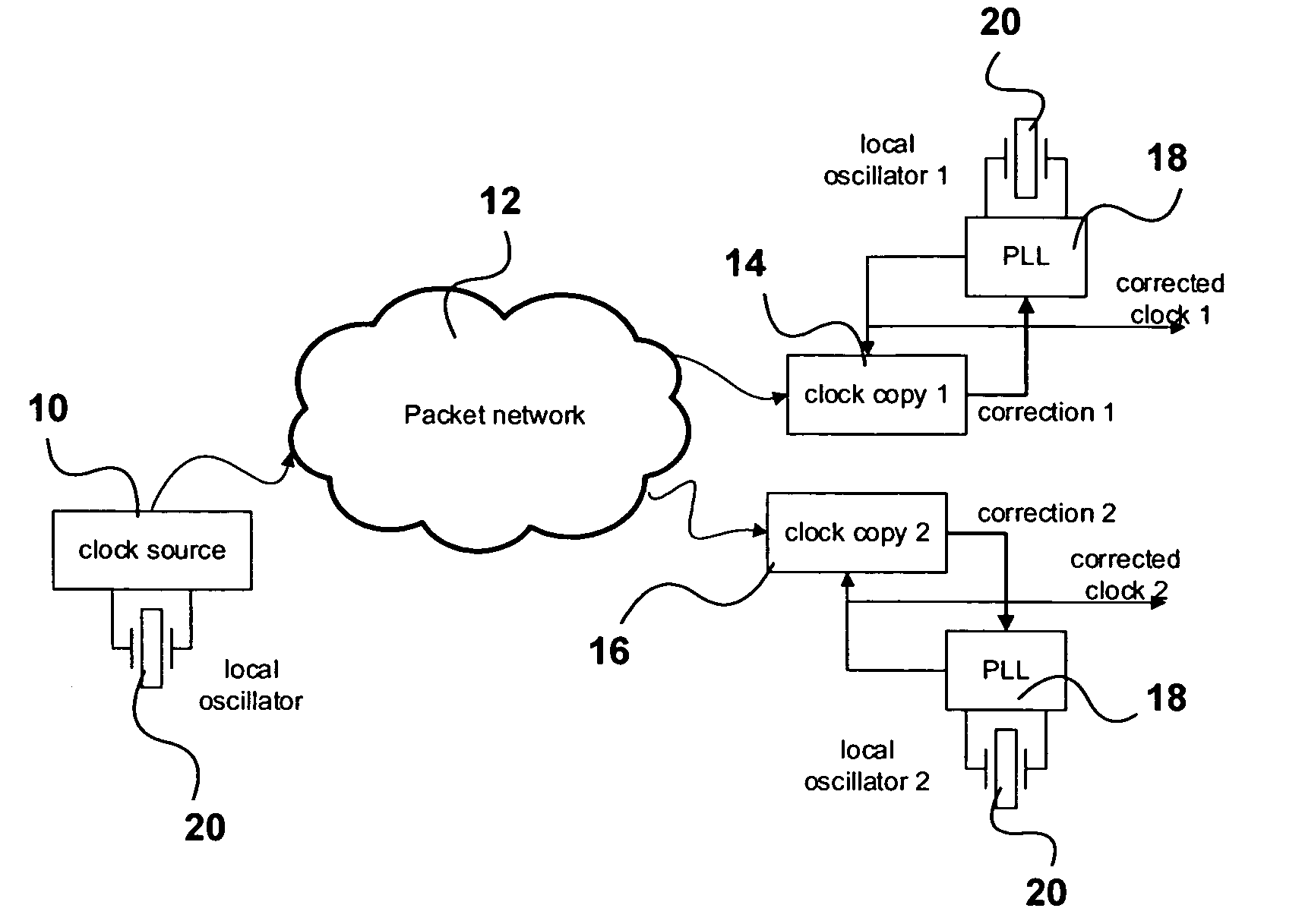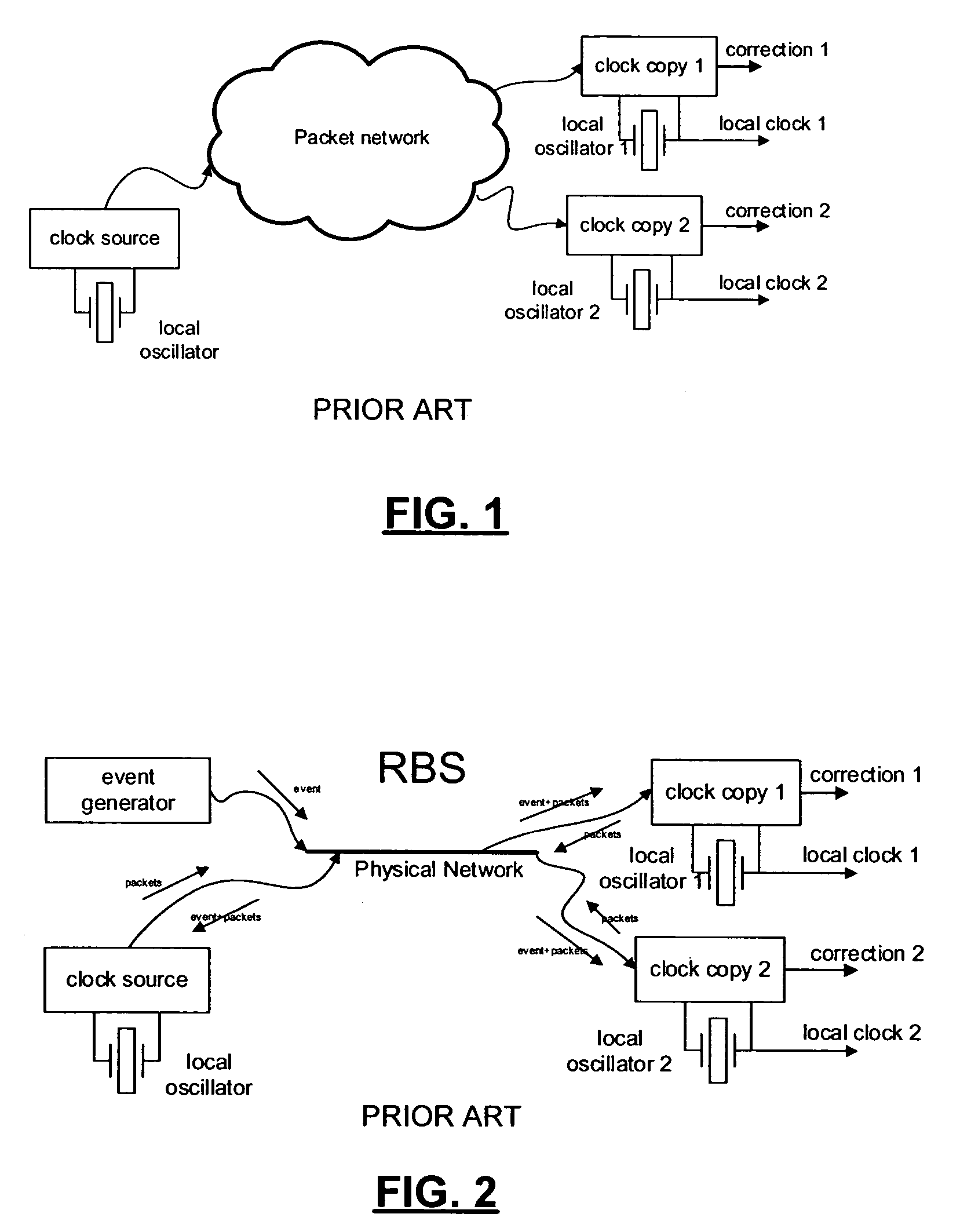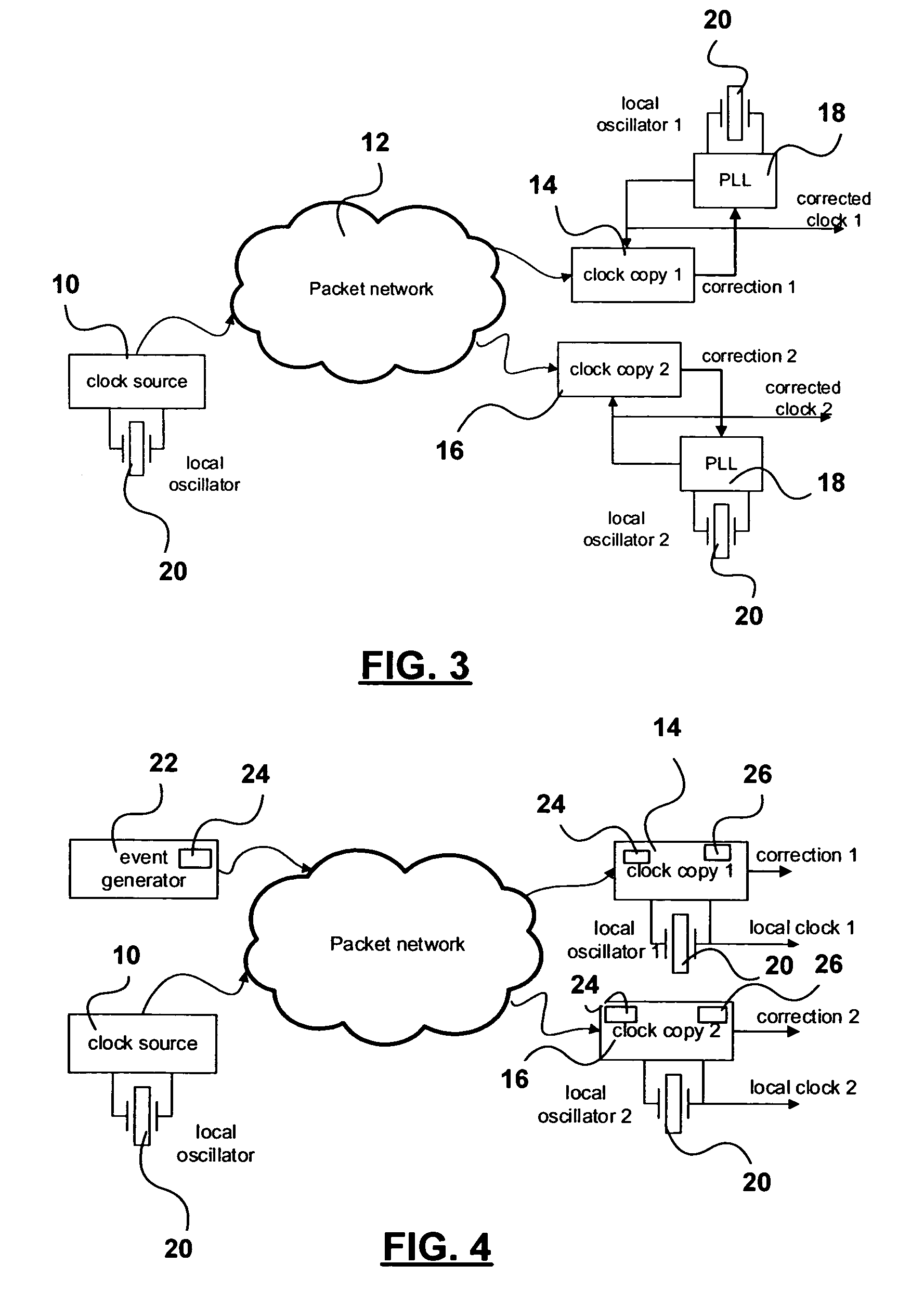Alignment of clock domains in packet networks
a clock domain and packet network technology, applied in the field of digital communications, can solve the problems of network creation of different problems, inability to meet all telecommunication standards, and inability to use a shared clock, and achieve the effect of extra cos
- Summary
- Abstract
- Description
- Claims
- Application Information
AI Technical Summary
Benefits of technology
Problems solved by technology
Method used
Image
Examples
Embodiment Construction
[0033]As discussed above, RBS normally requires a physical medium to be present directly between the nodes. It does not work well when switches and routers that do not support RBS are present since they introduce a large delay that RBS cannot handle.
[0034]In the discussion of RBS, the set of delay components falls into four parts:[0035]Send Time. This is the time necessary construct a message. In a hardware environment, it can be made very small fairly easily; in a computer environment higher priority interrupts will interfere.[0036]Access Time. This is the time required gain access to the physical medium. I can be quite large as a result of contention control, for example, in Ethernet.[0037]Propagation Time. This is typically very small, although in telecommunications the variation of propagation delay is a factor of importance (also due to the long lines).[0038]Receive Time. This is the time necessary on the receive side to properly detect the message. Like the Send Time, it is de...
PUM
 Login to View More
Login to View More Abstract
Description
Claims
Application Information
 Login to View More
Login to View More - R&D
- Intellectual Property
- Life Sciences
- Materials
- Tech Scout
- Unparalleled Data Quality
- Higher Quality Content
- 60% Fewer Hallucinations
Browse by: Latest US Patents, China's latest patents, Technical Efficacy Thesaurus, Application Domain, Technology Topic, Popular Technical Reports.
© 2025 PatSnap. All rights reserved.Legal|Privacy policy|Modern Slavery Act Transparency Statement|Sitemap|About US| Contact US: help@patsnap.com



